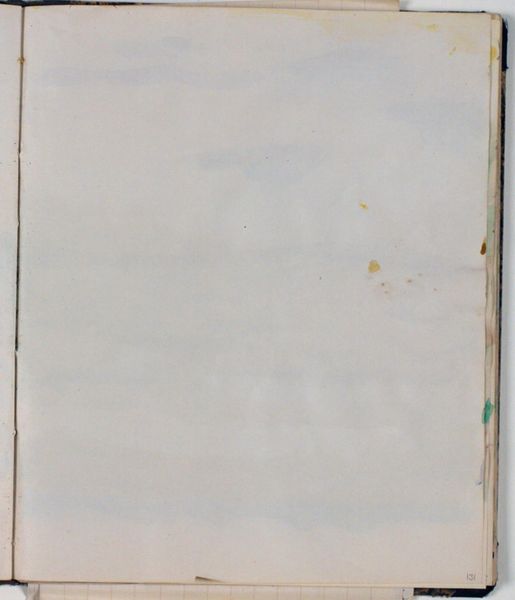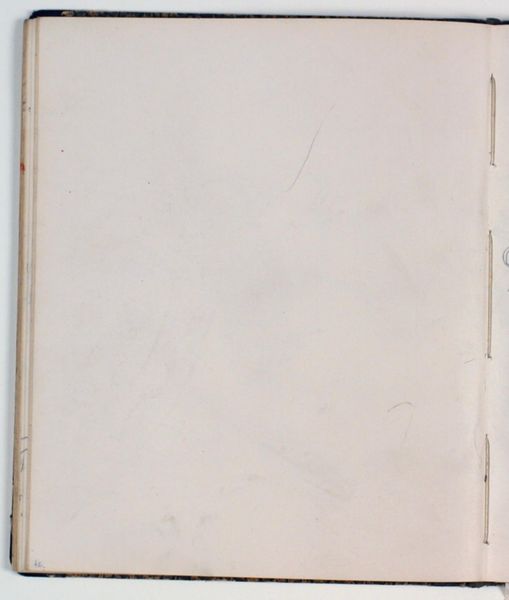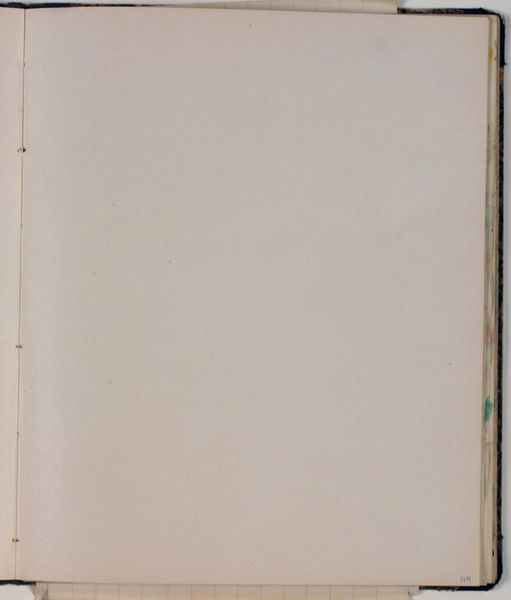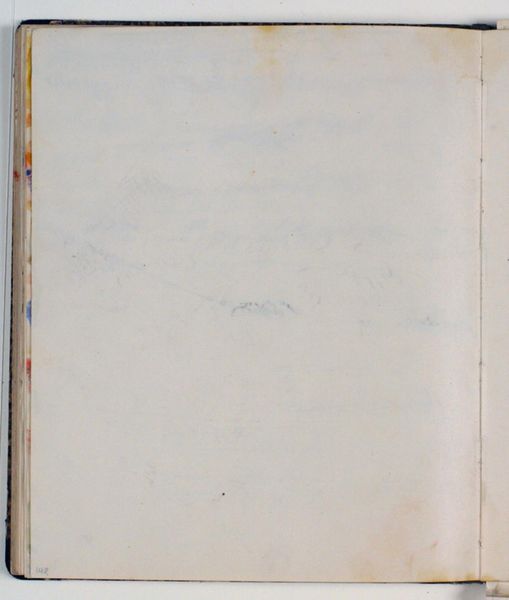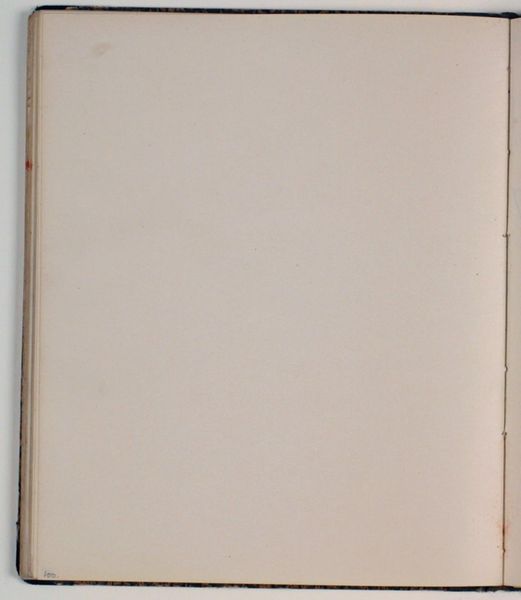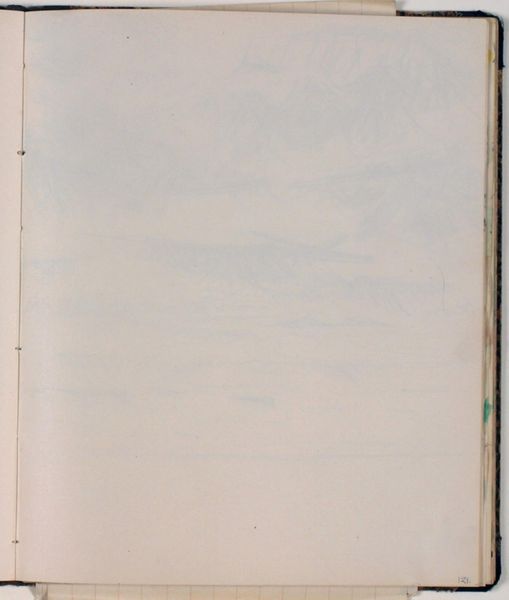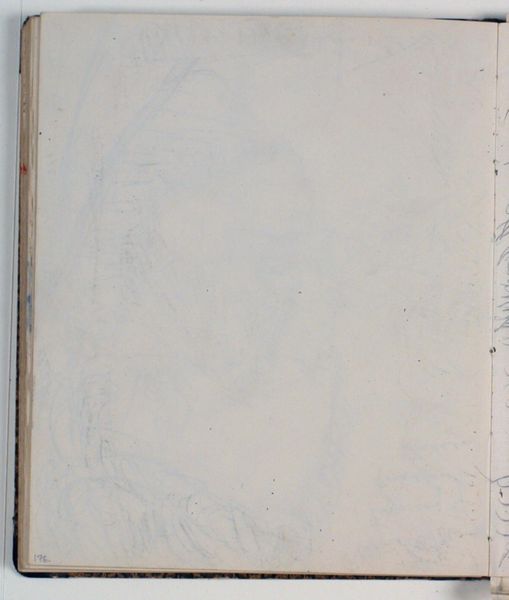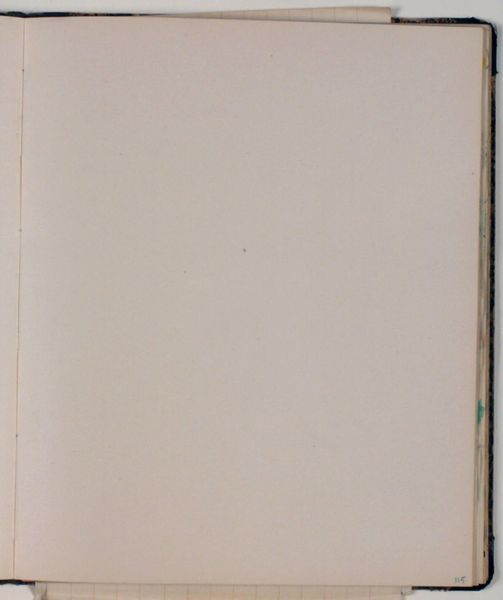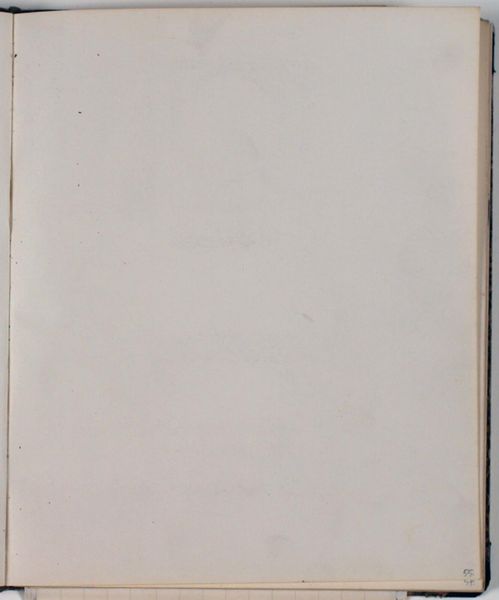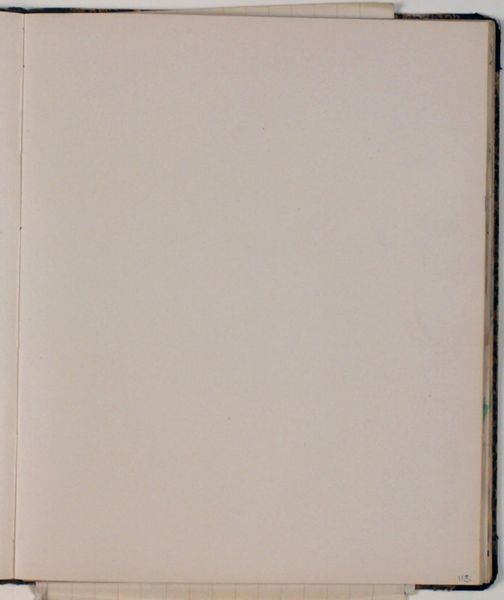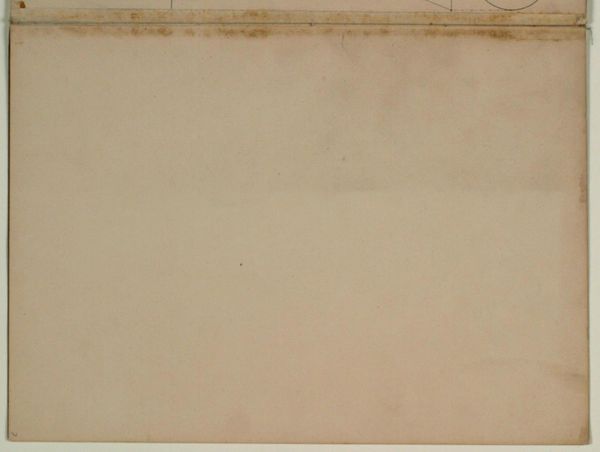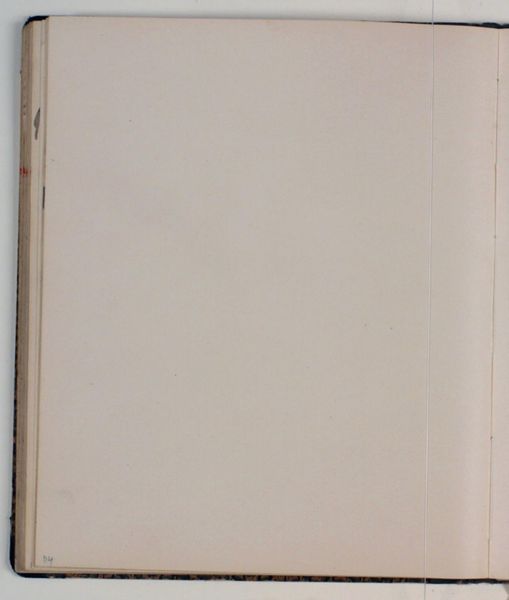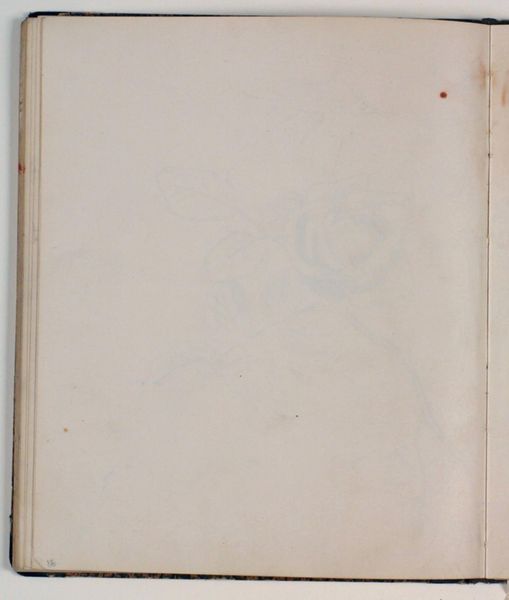
Dimensions: 226 mm (height) x 185 mm (width) x 112 mm (depth) (monteringsmaal), 221 mm (height) x 184 mm (width) (bladmaal)
Curator: This work is a watercolor and colored pencil piece on paper entitled "Blank" by Niels Larsen Stevns, created sometime between 1930 and 1936. Editor: My first impression? It's like a sigh. A peaceful sort of…emptiness. All soft edges and faded blues. Almost makes me want to grab a brush myself, but then… what would I even add? Curator: Well, the "blankness" is interesting, isn't it? Considering Stevns' other work, often populated with figures from myth and biblical stories, this starkness could be seen as a deliberate choice. Perhaps a commentary on the interwar period? Editor: Maybe he just ran out of ideas! Or maybe... maybe it's about potential? Like, this isn't empty, it’s *full* of possibility. Like looking up at the sky on a cloudy day. You can imagine anything up there, right? Dragons, lovers, anxieties... Curator: That’s a romantic view. I'm inclined to consider it from a post-structuralist perspective. The blank page as a challenge to narrative, an intentional void inviting the viewer to project their own meaning, but within the socio-political vacuum of its time… Editor: Ooh, “socio-political vacuum,” that’s good. I still think it looks like something I would absentmindedly paint trying to calm down after too many cups of coffee, that very light-blue you find when diluting watercolours... Curator: It is tempting to imbue this ‘blank’ work with our current sensibilities. However, during this period, abstraction was taking hold…the blankness perhaps represents a stripping away, a critique of representation itself within art making? Editor: Critiques are exhausting. Honestly, it could be his kid grabbed his brush, and he was just too chill to care. What do we really know, huh? I like thinking this "Blank" is more of a window, it opens you to a certain peaceful contemplation. Curator: It certainly opens avenues for debate and is far from visually passive. There are so many ways we can unpack this, challenging art historical expectations with contemporary thought. Editor: Indeed. Looking at it has definitely cleared some space in my mind too. For good or ill, who can really say.
Comments
No comments
Be the first to comment and join the conversation on the ultimate creative platform.
